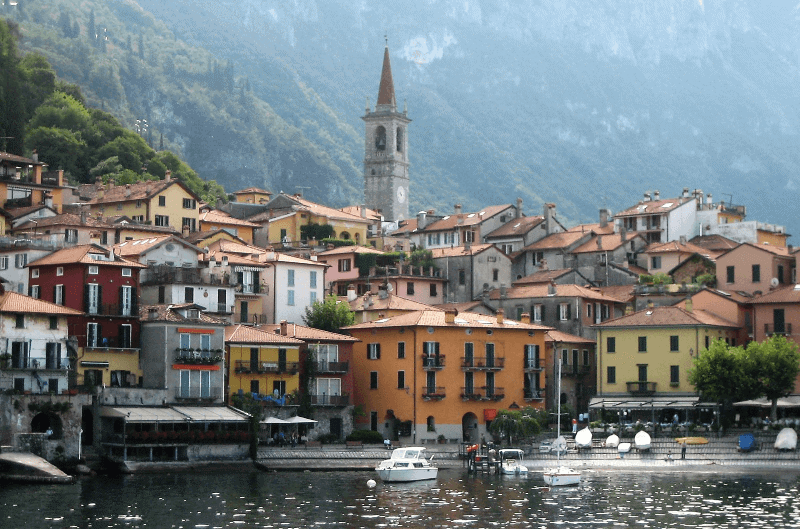
You’ve flown Space-A to Europe. Now what? Patricia Kuenzi, Space-A expert and avid European traveler, shares her tips for pre- and post-flight lodging, ground transportation, and many other tricks for making the most of your time in Europe!
It’s generally easy for Space-A travelers to travel from the Continental U.S. (CONUS) to Europe and back. From the East Coast, there are regular flights to Germany and England from Andrews, Dover, McGuire, Baltimore-Washington, and, fairly frequently, from Charleston.
Rota, Spain; Naples and Sigonella, Italy; and Souda Bay, Greece are common destinations from Norfolk NAS via the Patriot Express and other flights.
(Click here to learn more about flying Space-A on the Patriot Express)
From the West Coast, it’s possible to travel from Travis, McChord, or March ARB via connection with one of the East Coast bases. West Coast bases sometimes have direct flights, but these are not as frequent as the flights from the East Coast. There are even options to England and Germany from mid-country locations such as McConnell, Kansas!
Once on the Continent, however, where do you stay, and how do you get around? Lodging and ground transportation are critical components of a successful Space-A adventure in Europe.
Contents (click to expand)
Pre- and Post- Space-A Flight Lodging
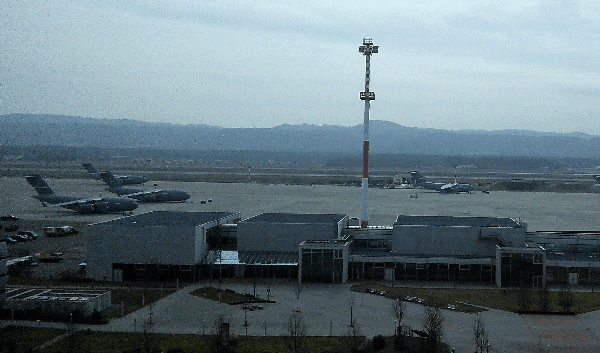
We try to arrange on-base accommodations for the night before planned departure and the day of arrival. It’s just easier, right before or after a long flight, to have a place to sleep near the terminal. On a longer trip, we also try to stop at a base for a night or two to do laundry (European laundromats can be expensive).
We have the DOD Lodging website and 800 and local numbers for the Army, Navy, and Air Force lodging in our phones for easy access.
When beginning a trip, we usually make lodging arrangements at our destination based either on the first flight we decide to try for, or as soon as we have our boarding passes in hand. Then, we adjust as necessary for flight cancellations or delays. When departing for our trip, we reserve for the night before our anticipated flight and extend, as necessary.
If planning to fly out of McGuire to Ramstein, for instance, we make reservations at McGuire lodging for the night we plan to arrive at the base, and reservations at Ramstein for the night we land there. When it’s time to return, we reverse.
| Related Reading: Space-A Lodging Eligibility & Reservation Tips
As with all things Space-A, there are times when on-base lodging is not available in advance. If we cannot make an advance reservation, we always stop at lodging as soon after arrival as possible to check for cancellations. We have generally had good luck using this method.
Last-Minute Accommodations Near the Base
At times, there is just no room at the Inn! In those cases, the local AMC Gram, available on most terminal web pages and at the terminal itself, is our friend.
AMC Grams list nearby lodging and transportation options. Our main issue in these cases is not the lodging itself, but the ground transportation to the lodging.
While taxis (and even the local bus!) are permitted on base at Ramstein, in some other European locations, they are not. It can be a long walk to the gate to grab a taxi – which is one of the reasons we are diligent about packing light!
Off-Base Lodging in Europe

Other than pre- and post-flight lodging on base, we prefer to stay in the local communities we visit.
Sometimes we arrange our hotels or apartments as soon as we are in-country, via sites like Airbnb, TripAdvisor or Kayak. But other times, we want to be more flexible and just see where we end up at the end of the day.
We still look at websites when we’re ready to stop, but we also use local tourist information offices or guidebooks for ideas. Some tourist offices will even call around to the places on their lists to find a reservation for you.
One option we love to take advantage of is finding local “rooms for rent” on the fly via signs by the side of the road, or displayed in windows in the town where we happen to find ourselves!
In Germany, these rooms are called “Zimmer”; in France, “chambres,” “gîtes,” or “chambres d’hôtes.” In Italy, they are called “affittacamere,” or “camere.” In Spain, look for “camas,” or “habitaciones.” In Greece, rooms for rent are called “domatia.”
For other countries, check out a country-specific guidebook, such as the Rick Steve’s series, to find out what local room accommodations are called.
We find great benefits in staying in private, rather than commercial, establishments. Among them are the opportunity to get to know the local people and customs better and having someone who really knows the area as a resource for activities.
These “local” places also have better prices and usually offer a home-cooked breakfast. Finally, private establishments just offer a more personal experience than a hotel or apartment provides.
Getting Around Europe

Our usual modes of transportation in Europe are rental cars and trains, with the occasional bus tossed in the mix. We’ve also made use of Ryanair or other budget Euro airlines on occasion for traveling farther distances.
Tips for Using Budget Airlines
When using budget airlines in Europe, it’s important to understand that it is imperative to pack light!
Checking bags is expensive, carry-on items are severely limited, and in many instances, in addition to measuring your carry-on bag, airlines weigh them. If you’re over the allowed weight, you must check the bag.
It’s advisable to use luggage specifically fitting European guidelines in order to avoid expensive surprises at check-in.
Driving in European Countries
In most travels, we rent a car, because we prefer the convenience and flexibility of having our own wheels. We were stationed in Naples for three years and are comfortable on the roads everywhere in Europe.
Southern Europe (Italy, Spain, and Greece) can be a real challenge, though, for those used to adherence to traffic laws in the U.S. There are driving quirks and customs in southern countries that can take some getting used to!
As an example, what we would term “tailgating” is a common practice in these countries. Drivers are not being aggressive, and mean no insult; they are simply positioning themselves for optimum passing position, should the opportunity arise! It’s best to continue driving normally and let the person behind you pass when they can.
In Greece, if there is a shoulder on the road, you are expected to drive on it to allow traffic behind you to pass. Germany and France are probably closest to our driving conditions, but be extremely careful with the left lane on the Autobahn! Do not pull into it unless you are sure the lane is clear, and use it only for passing.
Road signage is standard throughout the E.U., so if you have a good European guidebook with a section dealing with traffic laws and signage, you should be good to go anywhere on the Continent.
Where to Rent a Car in Europe
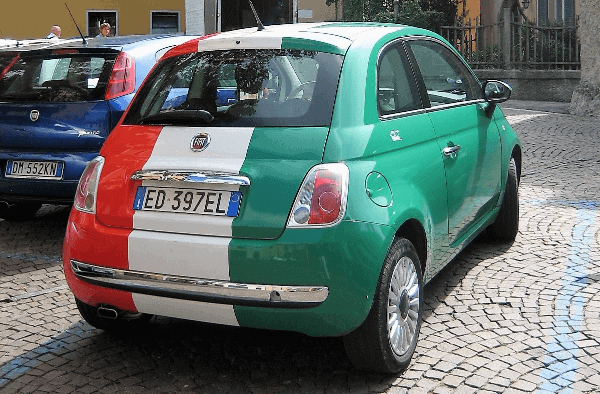
We generally rent on-base, in advance, from the U.S., if possible. As with hotels, it’s easy to cancel or slip the dates if necessary. We rent our car when we make our lodging arrangements, usually through the Hertz and Enterprise websites (the main concessionaires for military in Europe).
Vehicles may be rented on base at Naples, Sigonella and Vicenza, Italy (more about Vicenza later). There is a car rental right at the terminal in Rota, Spain, and also one on the base at Souda Bay, Crete.
Due to our Status of Forces (SOFA) Agreement with Germany, the only rental option for retirees at Ramstein is the Hertz concession, in Building #412. Spangdahlem has no option on base for retirees.
If you land at your destination with no previous arrangements, the terminal AMC Gram is, again, an excellent resource for locating a rental. On the civilian market, we’ve found Auto Europe, a rental aggregator, and EuropCar to be good options.
Pro Tips for European Rental Cars
Two final items to be aware of when renting a car in Europe.
First, most cars have manual transmissions. If you need or prefer an automatic (it will be more expensive), you must request one at the time of reservation. It is also necessary to make your reservation further in advance to have the best chance that an automatic is available.
Second, most modern European cars “turn themselves off” at stoplights and after a period of idling. It is not necessary to re-start your car when you want to move; simply depress the clutch, and the engine will resume normal operations.
Train Travel in Europe
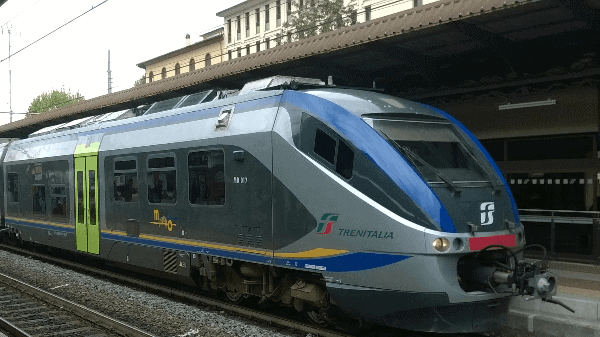
Trains in Europe are fast, easy, safe, and efficient! Many travelers are under the impression that purchasing a Eurail Pass in the U.S. is the best option. We have found this not to be the case, in most instances.
Each national rail system has a web page in English that is easy to navigate for finding schedules and purchasing tickets. The special deals they offer are frequently better than those to be had with the Eurail Pass. Deutsche Bahn (Germany), Trenitalia (Italy), RENFE (Spain), SNCF (France) are our most common sources for tickets.
You can purchase tickets online or via mobile app and download them to your smartphone. Paper tickets are not necessary. The conductor will simply scan the bar code from your confirmation email.
Each country offers special prices for specific routes at specific times. They also have their own versions of rail passes that are usually less expensive than a Eurail Pass would be.
Another convenient ticket purchase option is the machines located at almost every station or train platform. In order to complete your purchase, you will either need Euro cash or a credit card with a chip and PIN.
American cards that contain only chips may not work in European ticket machines (of any sort – trains, metros, museums, etc.). You can usually get the chip + PIN variety of card from your credit card company. Ours is USAA.
Space-A Ground Transportation: the Medevac Bus
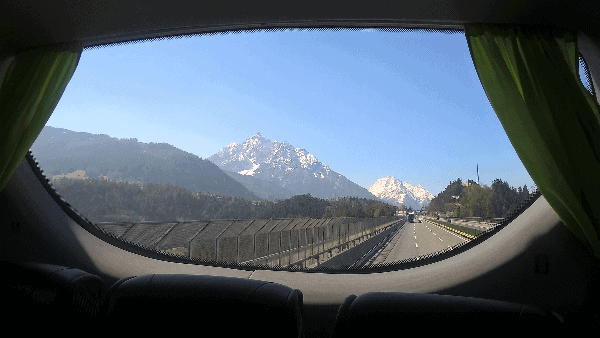
One option we nearly always use is the free Medevac bus that runs between Landstuhl, Germany, and Vicenza, Italy twice per week. The vagaries of Space-A frequently mean that we arrive in Italy but need to return from Germany (or the opposite). The Medevac bus makes the connection easy, directly from base to base!
The purpose of the bus is to transport medical patients between the clinic at Vicenza (Camp Ederle), and the U.S. Army hospital facilities at Landstuhl, near Ramstein. Seats not used by patients are available to other travelers on a first come, first served basis. There is no signup process and no seniority category; just be at the pickup point(s) about 15 minutes before the appointed time, sign the manifest, and get on the bus.
The route runs north from Vicenza on Tuesdays and Thursdays, and south from Landstuhl on Wednesdays and Fridays.
(Note from Poppin’ Smoke: confirm the current schedule and pick-up times by calling the Vicenza Health Center at +39 0444 61 9050 or Landstuhl Medical Center at +49 6371 9464 5899.)
The ride is aboard a very comfortable tour-type bus, and takes about 12 hours. It’s a spectacular trip through the Austrian and Italian Alps! There are 3-4 rest stops along the way, lasting 20-30 minutes each.
Ready to Go to Europe?
With the frequency of Space-A flights, ease of finding lodging, and convenient transportation options, Europe is a fabulous destination to explore! History, art, nature, food, culture, music – Europe has it all, and, once on the ground, the entire E.U. is within easy reach. Happy Travels!
Lady Cat 6, AKA Patricia Kuenzi, is a writer and voyager. She frequently takes advantage of military space-available travel (retired, Category 6). She shares her adventures, challenges, stories, tips, and tricks to help others successfully navigate the space-a universe. You can join her social media group, “Retired Military Space-A Travelers,” on MeWe.
Related Reading:
Lessons Learned from Flying Space-A from Japan to Germany

Great source of travel information. Thank you very much
Thanks for reading!
Thank you so much😊 This was exactly what I was looking for.
Glad it’s helpful!
Nice summary. We use the Ryanair approved Osprey bags and packing cubes with a lot of multi-use clothing options and haven’t had any problems with them yet. One note for your younger cat 6 readers–McGuire and other Air Force lodges can be notoriously difficult to stay if you have kids because of crew rest quarters. We found this out the hard way a few years ago and ended up taking a taxi out to the town about 30 min away from McGuire only to have our plane leave early that morning before we returned to the terminal.
What are you using for phone service–project FI from Google or just adding international to your existing plan? Also, do you ever by eurrail tickets in the US or do you just buy local tickets when you arrive where you’re going?
For phone, we just use our Tmobile – data and texts are free, and calls are .25 per minute. There are no extra charges. You do get charged one minute for calls that your don’t answer, so set up unconditional call forwarding to voicemail (they provide codes to do this), or keep your phone on do not disturb when not on wifi.
We never buy eurail tickets – always point to point in-country, or one of the passes provided by the national rail system. Personally, I think eurail passes are like travelers checks – useful at one time, but not the best deal in most circumstances any more. Every country we’ve ever been in has ticket machines where you can set your language to English, or has personnel who speak English.